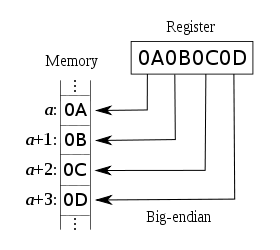What is a Big Endian?
The term “big endian” describes the order in which a sequence of bytes is stored in computer memory. In the big endian storage sequence, the most significant value in the sequence, or the “Big” end, is stored at the lowest storage address (ie the first position). The alternative method of memory storage is referred to as little endian, where the least significant value in the sequence is stored first. For example, if the hexadecimal number 4E51 was stored in big endian format it would be saved as the value 4E51. In the little endian system it would be stored as 514E.
What Systems use the Big Endian Format?
There are a significant number of computers, networks, and other Internet-based systems that use the big endian format for storing data. All of the IBM corporation’s 370 mainframes, Motorola microprocessors, and all RISC-based processors store data in this format. The TCIP/IP networking protocol also uses the protocol, which is sometimes referred to as “Network Order” when used in this context. However, not all CPU’s use the format as Intel processors store data in little endian format, which many computer programs that are designed to run inclusively on Intel-based computers also use. It is possible to use data storage converters to change data from one endian format to another when required.
Big and Little Endian Differences
The bits are stored in big endian format within both the little and big endian data storage formats. As a result, the majority of computer processors are made to support the big endian byte order for storing information. Data transmissions, however, can support both formats at the bit-level depending on the nature of the protocol. Email and Internet domain name addresses are stored in little endian format.
Where did the Name Big Endian Originate?
Both the big and little endian names originate from Gulliver’s Travels. In the novel, there were two political factions, the “Big Endians” and the “Little Endians.” The difference between the two was how they broke their eggs. The big endians choose to do so on the large end of the egg, while the little endians on the small end.


Comments - No Responses to “What is a Big Endian?”
Sorry but comments are closed at this time.